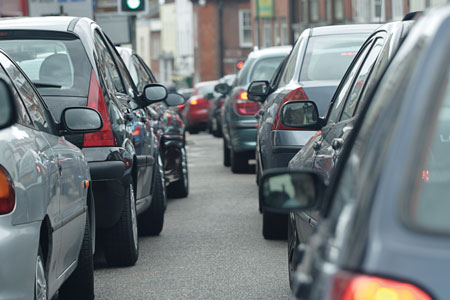Module 1—Motion
 Big Picture
Big Picture

© Carole Gomez/shutterstock
Have you ever been in a traffic jam waiting to inch ahead only to just wait some more? Did you wish you lived in an earlier age where high tech meant a carriage behind a horse? It was in such an age that the material discussed in this module was developed. It was developed from centuries of observation and attempts at understanding and predicting. Like the physicists of old, you will be looking at, describing, and analyzing moving objects.
People move through the modern world using a variety of methods. Whether you are walking; paddling a canoe; or travelling in a chuckwagon, car, airplane, or rocket, your motion can be analyzed with physics. But is the motion experienced when using the methods described here the same? Does your speed and direction have an effect on your motion? How can you accurately and precisely describe your motion?
Many of the ideas about motion and movement will be familiar to you from junior high science courses and Science 10. Many of the mathematical tools will also be familiar to you from earlier mathematics courses. You will use simple trigonometry and other ideas about triangles that you first looked at in junior high.
In this module you will learn to describe moving objects. As you would expect, the language of physics uses specialized words and phrases. You will use the special language of kinematics to make the description unambiguous. You will also use other descriptive tools, such as graphs and tables, to see trends and patterns in how objects move.
Every day, you are involved in the science of kinematics, but you probably haven’t used the language of kinematics to describe things that are in motion. While working on the lessons and labs, keep in mind that you are trying to describe something that seems very simple but that may be difficult to describe in a meaningful way.
As you are working in Module 1, you should keep the following questions in mind. They should help you fit the world of kinematics into your everyday world.
Essential questions for you to consider in this module are the following:
-
What concepts are needed in describing motion?
-
How are vectors and scalars used in describing motion?
-
How are acceleration, velocity, and displacement used in describing motion?